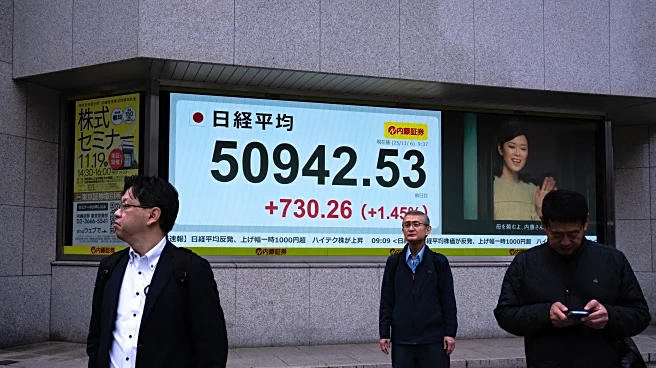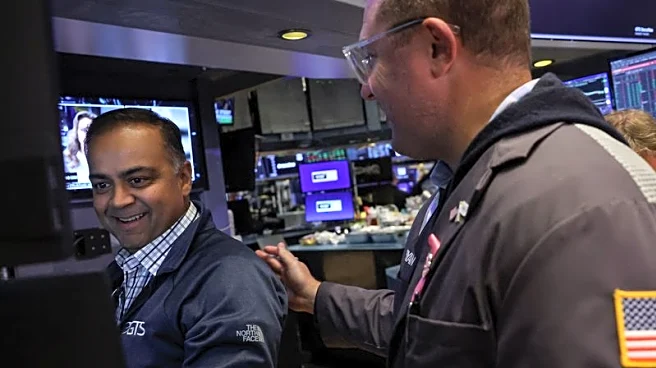What's Happening?
The U.S. dollar is poised to end the week nearly unchanged as investors weigh the Federal Reserve's cautious stance on interest rate cuts against concerns about the U.S. economy. Federal Reserve Chair
Jerome Powell has acknowledged the risks associated with further easing, leading to a five-day winning streak for the dollar. However, the currency experienced a sharp drop on Thursday due to weak labor data. The ongoing government shutdown has delayed the release of the monthly non-farm payrolls report, prompting traders to rely on private sector data, which indicates job losses in the government and retail sectors. Additionally, Chinese exports have fallen significantly, raising concerns about the global economic outlook.
Why It's Important?
The Federal Reserve's interest rate decisions are crucial for the U.S. economy and global markets. A potential rate cut in December remains uncertain, with the labor market's performance being a key factor. The dollar's fluctuations reflect investor sentiment and economic uncertainty, influenced by the extended government shutdown and President Trump's tariffs. The global economic impact is further highlighted by China's export decline, which could pressure European markets. The situation underscores the interconnectedness of global economies and the significant role of U.S. monetary policy in shaping market dynamics.
What's Next?
The Federal Reserve's next meeting in December is anticipated to be pivotal, with a 65% chance of a rate cut according to market predictions. The outcome will depend heavily on labor market data, which remains uncertain due to the government shutdown. Investors will continue to monitor economic indicators and geopolitical developments, including U.S.-China trade relations and the potential resolution of the government shutdown. The Federal Reserve's decisions will likely influence global market trends and investor strategies in the coming months.
Beyond the Headlines
The current economic scenario highlights the broader implications of monetary policy and geopolitical tensions. The adoption of artificial intelligence and cost-cutting measures leading to job losses reflect ongoing shifts in the labor market. Additionally, the global reliance on U.S. economic stability underscores the potential ripple effects of domestic policy decisions on international markets. The situation calls for careful navigation by policymakers to balance economic growth with inflation control and market stability.













